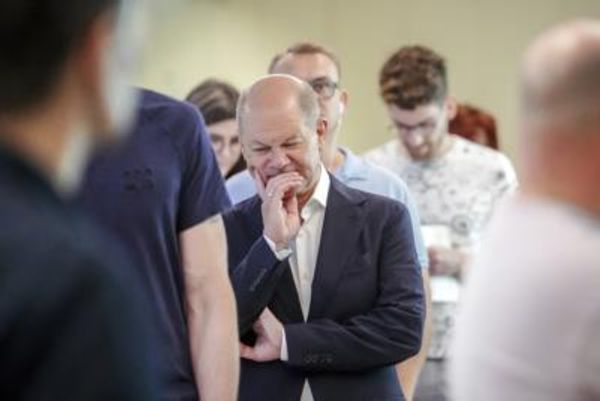
Phone signal went live this week across a quarter of the underground system in the capital, mainly in central London, with further coverage planned by the end of summer. This is great news for people who can’t go five minutes without talking, and bad news for everyone else. The previous lack of network coverage was just about the only thing keeping us civil.
Across all transport networks, there has been a radical divergence in etiquette since the pandemic. That period, when there was minimal occasion to share space with strangers, introduced a lot of complexity to a system that was already badly codified, and somehow erased all the tacit consensus we’d reached beforehand.
The rules used to be incredibly simple: if you wanted to listen to anything on public transport, you did it with headphones. The only grey areas were around “is anything audible through the headphones?” (ideally not, but a young person with the volume up in a surfeit of joie de vivre could get away with it), and “should an audible conversation be held with a real-life associate?”. Friends and couples normally stay pretty quiet, but colleagues find it impossible because of the power imbalance: silence is awkward unless it’s mutually agreed, but only two equals can make that pact. It’s insane, the amount of “continuous professional development” you can eavesdrop on public transport, set against the vanishing rarity of hearing a couple even discuss what they want for dinner.
But after Covid, the brakes came off. It’s now no longer unusual to hear music, TikToks, whole TV shows sometimes, broadcast to the carriage, as if the phone and its owner are in a private world and everyone else is just a simulation. Some bystanders seem merely annoyed by this, but for others it is hell, since they can’t tackle the original rule breach without, themselves, breaching an older rule – never engage with a stranger on the tube. I once, unknowingly, sat next to my actual dad on the Piccadilly line, thinking: “Weird, that person smells like my dad”, and still didn’t look directly at him until we were getting off. At the same stop. Because we were meeting each other.
Masking, too, has become another flashpoint: after face masks ceased to be mandatory, plenty of people still chose to wear one and became the focus of silent ire for those who disagreed with … well, it was never clear exactly what they were disagreeing with. To some, masks were an affront to civil liberties, to others they were an excess of caution and, by extension, a statement of distrust in others. The disapproval is mirrored by the maskers, who still – though they are few – vent a powerful silent disapprobation in a busy carriage. Or is that just what faces look like when all you can see is the eyes?
If etiquette on the internet is still the wild west – the territory simply expanding and changing too fast for social regulation to evolve on its own – transport manners are in more of a postwar/ post-natural disaster state: we all remember what they used to be. But some people would prefer not to go back to the old ways.
Into all this has stepped the etiquette expert William Hanson, who did so much of the legwork building new rules during the pandemic. His tube edicts in full: eat nothing smellier than a mint; in a full carriage, maintain glacial silence (a Fox’s Glacial silence, if you like); in an emptier one, quiet chat is permitted; all music and calls on headphones; and finally, a huge amount of choreography around backpacks.
All good, but quite millennial – notice the entire absence of whether or not you can do your makeup on the tube, which the bracketing generations (X and Z) are obsessed with. When I was growing up, the rule was that you could do anything cosmetic so long as it didn’t produce waste (mascara, fine; tweezing out a chin hair, absolutely no way). Gen Z takes that as a given, but having grown up with Zoella and the makeup tutorial, they reserve the right to watch closely and judge, noiselessly.
As for the phone calls with headphones, available for the first time in the tube’s 150-ish year history, you’re left with the fact that you are still talking. This breaches about half of all the rules at once – noise pollution, oversharing and, depending on what you’re saying, producing waste – and the facility should be exercised with caution.
Having said that, millennials would never answer or make a call that hadn’t been scheduled; a quarter of gen Z have never answered their phones at all; boomers can’t hear over the ambient carriage sounds; and gen X – well, who’re we gonna call? Our mums?
• Zoe Williams is a Guardian columnist







